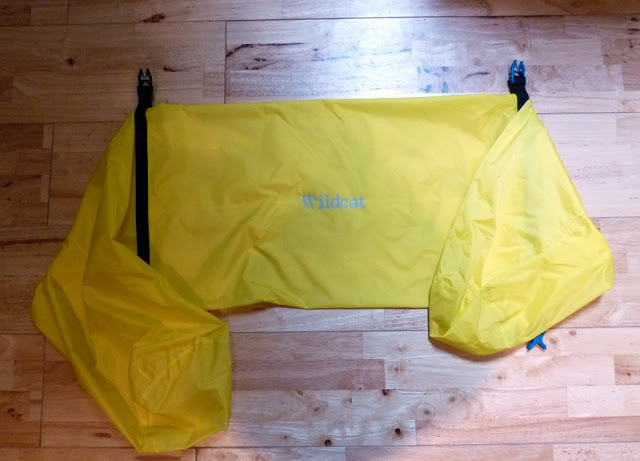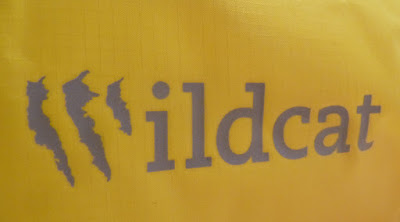Double-ended dry bags? It’s a concept I fully understand in theory but I’ve always found that when theory becomes practice, there’s no real world benefit to having a hole at each end. If we were playing dry bag Top Trumps, I’d fail to see how ‘ooh I can get my stuff out of either end’ can possibly better a reduction in capacity for a given size, additional weight, another buckle to fail and the all too obvious, extra big hole that might allow water in.
Dry bags aren’t generally considered to be the sexiest piece of bikepacking kit but for most of us, they’re a mainstay, something that gets continual use on every trip we undertake. Some time a go, I found myself mentally constructing what I believed would be the ultimate bikepackers dry bag. I gave it a lot of thought and you might be surprised to hear that the finished article was in fact, double-ended. Now please don’t misunderstand me, double-ended it may have been but it wasn’t simply a cylinder with a gaping hole at each end, oh no, there was something special about it … here’s a little scenario to help you figure out what it might be;
It’s a glorious sunny day, you’re travelling light and all is well. Some time around 9.30pm, you spy a lovely flat spot with short grass, water nearby and far enough off the track that your presence will go unnoticed. After leaning your bike against a convenient tree, you unclip a dry bag from your harness and set about making yourself comfortable. Out comes your tarp and up it goes, then your sleeping mat which is swiftly followed by your bivvy and finally your cosy sleeping bag. … Hours later, you open your eyes to a new day, a day which isn’t quite so pleasant as the previous one. Rain runs off the edge of your gutter-less tarp and onto the foot of your bivvy where it forms droplets that cling to the material for a second before running onto the floor – sometime during the night, it started raining.
Okay, sometimes it rains, so while there’s nothing unusual about the above, it does leave you with the problem of how best to pack your stuff away. Yesterday was dry, today it’s not. Yesterday you had everything stowed safely inside a single dry bag, today, both your tarp and bivvy are wet, so that’s unlikely to work so well – is it? You could negate the problem by packing items which must remain dry separately from any which are likely to get wet before you ever leave home but in some cases, that might mean taking more luggage than is strictly necessary. Another solution might involve trying to pack the ‘must remain dry’ and ‘might get wet’ items in separate inner bags inside a single outer … it’ll work but it’s extra faff and often results in dead space. The solution, is a double ended dry bag with an inner ‘sleeve’ attached to each end which form secondary sealed compartments. The inners are free to move inside the outer, so the dimensions are variable – If you take the above scenario as an example, you may have packed all you gear from one end when you set off on that dry sunny afternoon. However, we know doing the same the following morning won’t be ideal, so you now pack your sleeping bag and mat from one end and your tarp and bivvy from the other and as if by magic – wet is completely separated from dry.
 |
| Here it is with the inner ‘sleeves’ pulled out so you can see what I’m talking about. Note that one’s larger than the other. |
As ideas go, I thought it was borderline genius but no matter how good any idea, unless someone can take it and transform it into something tangible, it’s largely worthless. Step forward Wildcat Gear, who’ve been able to take the concept, tweak it and transform it into something you can actually buy, use and benefit from and a brilliant job they’ve done of it too. The new dry bags are available in both 8L and 13L sizes and you can choose from stealth black or a more visible bright yellow but both sport a high-viz Wildcat logo for those unlit country lane excursions. Those amongst us who struggle to remember things, will be glad to hear that the buckles are colour coded, so there’s less chance of forgetting which end you packed your dry socks. As you’d expect, construction is top-notch and just like all Wildcat products, excess weight has been reduced wherever possible without sacrificing durability. Something I think is also worth mentioning, is the fact that these dry bags are made in the UK – I can’t be 100% certain (c’mon I can’t know everything) but I think I’m right in saying that they’re the only dry bags that are produced on these shores, so top marks for continuing to maintain their ‘Made in the UK’ ethos.
If you want a double ended dry bag that actually makes sense, you know where to go – Wildcat Gear

That's clever, fair play. I like that.
Very clever bit of thinking. Well done.
Why does it need two sleeves? Wouldn't one serve the same?
My initial idea only involved a single sleeve attached to one end. However, doing it this way does mean that everything in there is 'double bagged' which must be an advantage during the average British summer ;o)
Very true, but extra grams :0)
oh yes, every gram counts but a wet sleeping bag's really heavy ;o)
Like it. Great idea. But I also find a double ended dry bag is more even when packed (cos the buckle end is always narrower, so two buckle ends means it sits more evenly in the harness). I see that is an extremely superficial detail though, and speaks more of my taste for symmetry than anything useful…
…and very cold :0)
There's the possibility of a double ended sleeping bag here. A wet end for the damp tired nights and a dry end for balmy Summer slumbers. A step too far, I suspect.
Nice idea. How resistant to abrasion do you reckon these are?
So far they seem very durable and the fact that whatever's inside is sealed in a double skin, should help too.
A mashup between a drybag and a "Bishop bag" would be good to house your hammock and attached underquilt. A mesh (non-drybag) or a drybag Bishop would allow you to carry a tarp in the same spot. It allows you to quickly deploy even during rain and might be a nice collision cushion on top of the handlebars.